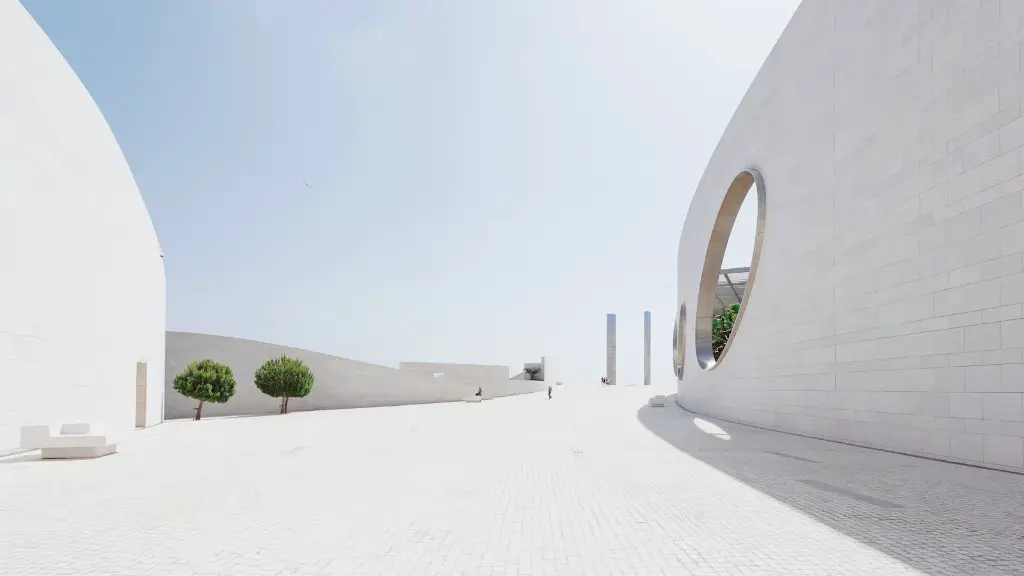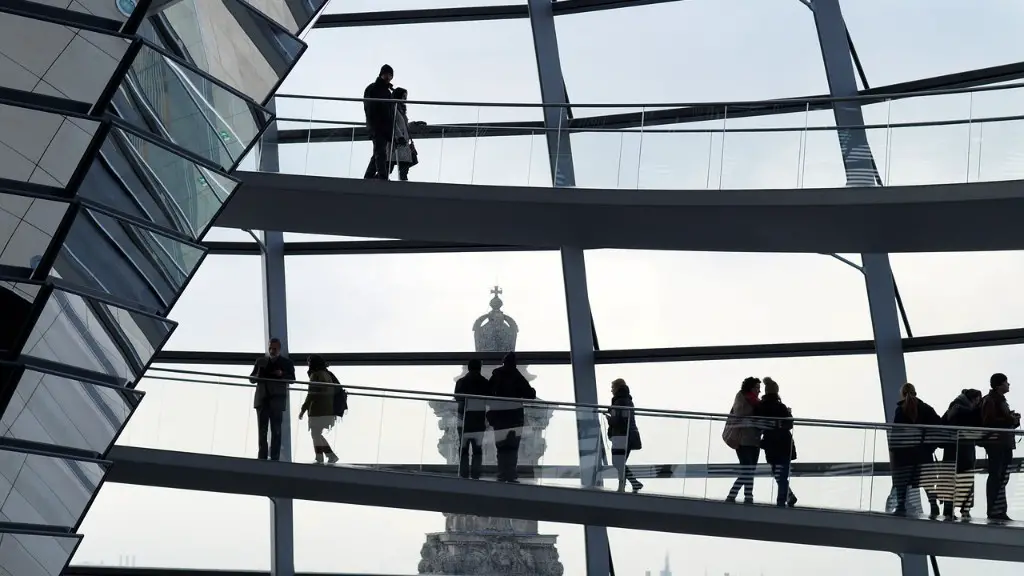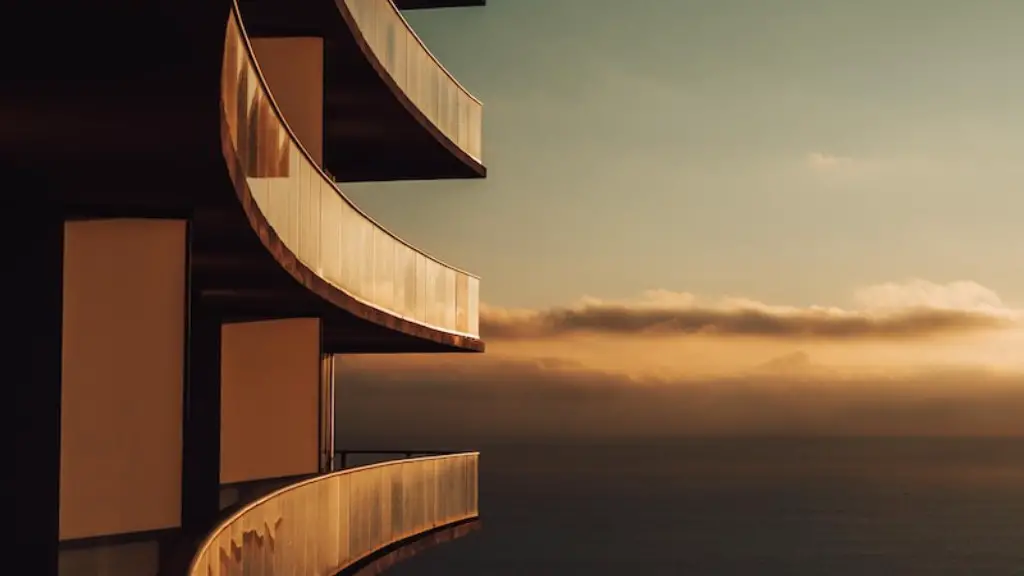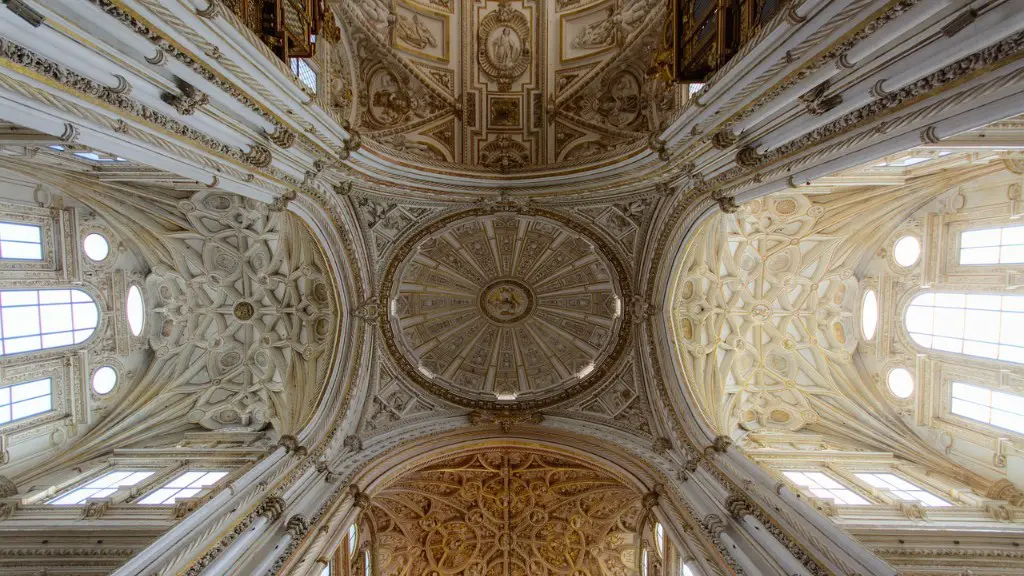When Nature Meets Architecture: Embracing the Future
Nature and architecture have traditionally been considered at odds with one another, a point of contention between developers and environmentalists. However, some forward-thinking architects have proposed a third way, the harmonious combination of nature and urban planning. Architects find ways to incorporate tropical plants, park elements, and other outdoors spaces into design schemes to create a more unified relationship between human-made structures and the Earth’s natural environment. This approach is a beneficial one, as these combined elements can result in an environment that is both beautiful and eco-friendly.
One of the hallmarks of nature-infused architecture is a strong emphasis on the use of repurposed and reused materials. This helps to reduce the environmental impact of building by decreasing the creation of new materials and redirecting existing ones. Architects and designers also advocate using native plants and wind, solar, and other renewable energy sources to minimize the building’s contribution to climate change. By sourcing materials locally and integrating traditional building practices, architects are able to craft unique and sustainable structures that embrace nature.
This is not just a theoretical concept but a reality in many places around the world. Case studies have revealed that nature-infused architecture has concrete advantages for both those who live and work in the developed structures, and for the environment as a whole. For instance, in one study conducted in Indonesia, eco-friendly homes were shown to improve air quality, reduce energy consumption, and even increase their inhabitants’ sense of wellbeing and comfort.
Nature-infused architecture is not without its critics, however. Some are skeptical of the claim that nature and architecture can work together in harmony. And there is no denying that sometimes the integration of nature and construction projects can lead to unforeseen problems, such as water shortages or non-native species encroaching on natural habitats. But by and large, the vast majority of projects demonstrate a positive impact, both in terms of sustainability and aesthetics.
Ultimately, when nature meets architecture, it is a win-win scenario. Urban planners are able to create sustainable and aesthetically pleasing architectures, and nature is given an opportunity to thrive within the modern world. As our cities and societies continue to expand, urban planners should continue to find ways to create an environment that embraces both nature and man-made structures. Only then can we truly embrace the future.
The Benefits of Nature-Infused Architecture
Nature-infused architecture has a number of benefits for the environment, society, and those living and working within the developed structures. First, this type of architectural practice is a great way to reduce the environmental impact of a structure and its materials. By utilizing native plants and locally-sourced and reused materials, architects are able to decrease the number of new materials that need to be created. This method of design not only decreases an environmental impact, but it also decreases the costs of a building’s materials. Additionally, using natural light and energy sources helps to further reduce energy costs.
Furthermore, integrating nature and architecture can often result in aesthetic advantages. Natural elements such as trees and foliage can bring life to a building while also providing shade and cooling external areas. Additionally, outdoor spaces, such as parks and gardens, can provide recreational areas for those living and working in the structures. The combination of these elements can not only reduce stress, but also provide a sense of community and wellbeing.
Finally, nature-infused structures tend to be resilient and adaptable. Utilizing locally-sourced materials helps a structure better handle natural disasters, such as earthquakes and floods. Additionally, the integration of vegetation can help to stabilize and protect a building from winds and other natural elements.
Challenges in Implementing Nature-Infused Architecture
Despite the multitude of advantages of nature-infused architecture, there are also numerous challenges in its implementation. The most pressing of these is the fact that nature and urban development often tend to clash, both as a result of resources required, and the knowledge needed to put such a system in place.
Additionally, regulations and cultural norms can make it difficult to source locally-sourced materials, particularly in more conservative societies. Additionally, finding the right balance between nature and artificial elements to maintain a sustainable and aesthetically pleasing structure can often be a challenge. Finally, maintenance and protection of the structure and its elements must be taken into account. Without proper implementation, nature-infused architecture can have a negative impact on the environment it was meant to protect.
Developing Nations and Nature-Infused Architecture
In developing nations, there is great potential for nature-infused architecture to help spur economic and social growth. By providing a more efficient use of resources and eco-friendly designs, this type of architecture can help reduce poverty and provide employment opportunities. Additionally, eco-friendly housing can provide much-needed shelter and improved quality of life. Finally, the integration of nature can provide a sense of social cohesion and positivity in a community.
In many developing nations, particularly in Africa, Asia, and South America, there are already some examples of successful nature-infused architectures. For instance, the Sriyani communities in Sri Lanka have implemented eco-friendly wooden structures to reduce their impact on the environment and increase their resilience to natural disasters. Additionally, the Taiwanese Shem people have used traditional materials such as bamboo and ornamental plants to create structures that maintain their natural environment and attract tourists.
Ultimately, nature-infused architecture has the potential to be a powerful force for economic and social growth in developing nations. By creating more efficient and environmentally-friendly structures, architects and planners in these nations can help lay the groundwork for sustainable growth and increased quality of life.
The Future of Nature-Infused Architecture
Nature-infused architecture is still an emerging field, and one which will continue to evolve and grow in the coming years. With the rise of environmental awareness and the ever-increasing demand for sustainable development, architects and planners will be tasked with finding more creative and eco-friendly solutions.
At the same time, technology such as artificial intelligence and the internet of things can help to further streamline and optimize nature-infused architectures. For instance, AI can be used to monitor and analyze different components of a structure and its environment for optimal efficiency. Additionally, IoT can be used to oversee the structures’ water and energy consumption, or to monitor the health of vegetation.
Finally, as our cities and societies continue to grow, nature-infused architectures will provide a unique way to create more efficient and sustainable structures. As such, nature-infused architecture will remain an important part of urban planning in the coming years.
Conclusion
Nature-infused architectures are a win-win scenario, offering both environmental and aesthetic advantages. This type of architecture is still relatively new and evolving, particularly in developing nations. In the future, technology and creative solutions can help to advance this field and make nature-infused architectures more efficient and sustainable. Urban planners and architects should continue to find ways to create an environment that embraces both nature and man-made structures in order to both embrace the future, and preserve it.




